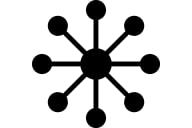You have /5 articles left.
Sign up for a free account or log in.
One common justification universities offer for the enormous expense of maintaining an National Collegiate Athletic Association sports program is the “front porch” claim. University officials entertain the notion that college athletics serves as an access point, a welcoming entryway that allows the public to connect with the traditions, values and campus life of the institution.
When then secretary of education Arne Duncan addressed the NCAA in 2010, the title of his talk was “Building a Better Front Porch for Higher Education.” Former congressman and University of Maryland trustee Tom McMillen extended the metaphor in 2015, noting that, “Athletics are like the front porch on a house. When they start cracking and falling, it hurts the whole university.”
Indeed, when the “front porch” analogy is deployed, it is often in the context of athletic scandals, the implication being that bad behavior among boosters, coaches and athletes occurs in front of the whole neighborhood. Thus, when Ted Mitchell, president of the American Council on Education, published a 2018 editorial on corruption in college athletics, the headline was “Higher Education Must Clean Out Its ‘Front Porch.’”
Academics might choose to concede the front porch to athletics, complaining about misplaced values in a manner time honored since Thorsten Veblen blamed college athletics for “the resulting diversion of interest from all matters of learning” back in 1918. A more constructive approach might be to use the analogy of the front porch to frame a conversation about how some of our academic work can be presented to the nonstudent public through academic outreach and extension. Every day on every campus, timely and fascinating knowledge is shared with students and questions of import are debated. Surrounding many of those campuses are communities hungry for expert and intellectually stimulating engagement. The university’s front porch need not be a stadium. It could be the lecture hall, the classroom and wherever one finds the shared life of the mind.
Academic outreach has long been a hallmark of American public higher education, from land-grant university extension centers to health screenings at medical schools. Campus leaders know the value of applying higher education expertise and talent to regional social, economic and cultural needs, and many institutions support programming that facilitates the extension of university resources beyond their campuses. Not only does academic outreach directly benefit the public, it can also build community goodwill and generate political capital -- elements that have long helped protect intercollegiate athletics from the budget pressures that beset academic programs.
Researchers has long established the benefits of academic outreach, so much so that the theories and practices of academic outreach have been refined from conferences and symposia to journals such as the Journal of Higher Education Outreach and Engagement. The 2006 creation of the Carnegie Community Engagement Classification gave institutions with robust academic outreach operations a special designation for which to strive. Today it is rare to find a public university that does not have a formal outreach infrastructure.
But academic outreach depends upon the faculty, and the value of these activities is not often reflected in faculty incentives. Whereas the collective good of academic outreach is attested to in the advances in economic development and quality of life in regions that contain universities, the priority placed upon individual academic outreach activities varies from institution to institution. Because most institutions -- rightly so -- place the responsibility for developing tenure criteria in the hands of the faculty, and because academic outreach takes place outside the traditional ambit of the institution, faculty members and administrators often have differing perspectives regarding the value of those activities. If faculty members knew the pervasive good -- and goodwill -- academic outreach creates, they might assign it a high value in tenure deliberations. If administrators are mindful of how much time and effort academic outreach requires, the rewards for such activity might be better calibrated to recognize the importance of community engagement.
A common academic outreach activity much beloved by the community that surrounds my home institution, Coastal Carolina University, is the public lecture. The template is simple. A professor prepares a self-contained presentation on a topic of local, regional or national interest. The public is invited. A robust question-and-answer period follows the presentation.
The faculty presenters often report their pleasure at being able to speak to an engaged audience. They sometimes note the contrast between an eager older audience of willing attendees at the public lecture and the occasionally less engaged undergraduates who don’t enjoy every class with similar relish. The audiences report satisfaction -- faculty members are well prepared and engaging, and the university garners praise for providing the program to the community. The value of such activities is often highlighted from within the academic outreach infrastructure of the institution -- for example, the University of Tennessee’s Faculty Awards for Academic Outreach and North Carolina State University’s Academy of Outstanding Faculty Engaged in Extension.
That is all good until the time needed for effective outreach is compressed by the pressure to teach and publish, particularly in the pretenure period. For faculty members, the time required to prepare a high-quality public lecture is not insignificant. Because the audiences attracted to academic outreach programs are engaged and discerning, woe be to the colleague who attempts to wing it, armed only with class notes intended for undergraduate instruction. Lifelong learners are not passively taking notes in preparation for the next test but eager for the give and take of debate, brimming with life experience and armed with their own strongly held opinions.
Consider then the time commitment required for more sophisticated extension activities, such as business faculty sponsoring entrepreneurship incubators or ecologists working with community advocacy groups to address local water quality. The coordination of partnerships can consume a significant portion of a colleague’s workweek, even if an office of academic outreach assists with logistics. In the zero-sum game of faculty time, effort dedicated to academic outreach is diverted from scholarship, teaching or committee work -- the activities that are valued in promotion and reappointment processes.
Think tanks, research centers, lifelong learning programs -- the faculty members engaged in such activities sometimes operate in the twilight between teaching, scholarship and service. Academic outreach is often a kind of teaching, but it’s not always credit-bearing instruction. As such, faculty evaluation processes are not always equipped to give credit to a colleague who, for example, offers a three-week noncredit community class on local history or estate planning. One might categorize such activity as service, but outreach doesn’t follow the contours of traditional faculty service, unlike a committee that wraps up by the end of the semester. In addition, few people would label academic outreach as scholarship, but effective academic outreach depends on faculty members who are able to bring contemporary disciplinary knowledge to bear on community concerns, and public scholarship can yield both public good and advances in research.
In short, combining elements of teaching, scholarship and service, academic outreach exists in a categorical ambiguity that sends a message to faculty: it may not “count.”
For colleges and universities that wish to foreground and reward academic outreach among the faculty, the solution may be a new category. As long as academic outreach exists between and among the three customary professorial priorities of teaching, scholarship and service, community engagement activities are likely to be viewed as ancillary institutional functions. A different model might be to allow academic outreach to exist as its own category, alongside teaching, scholarship and service -- with outreach valued as a separate faculty enterprise. Once it is formalized as a distinct activity in the faculty profile, faculty members can debate how much and what kind of academic outreach should be encouraged. Instead of expecting academic outreach to compete with existing performance categories, outreach might be valued as part of a well-rounded case for reappointment, promotion and/or tenure.
At a time when public support for higher education is dwindling, making time for academic outreach can remind the public of the value of the higher education institutions in their midst. When academic outreach becomes the university’s front porch -- whether in the form of nursing programs hosting health screenings or accounting departments offering tax assistance -- the expertise of faculty and staff members is on display.
Such demonstrations of the university’s value to the community can remind stakeholders that spectator sports are not the public’s only institutional access point. Academic outreach can knit communities and universities together in a morally supporting network and provide measurable and sustainable benefits for the taxpayers who support public education. Best of all, such a front porch runs little risk of collapsing under a burden of scandal.








